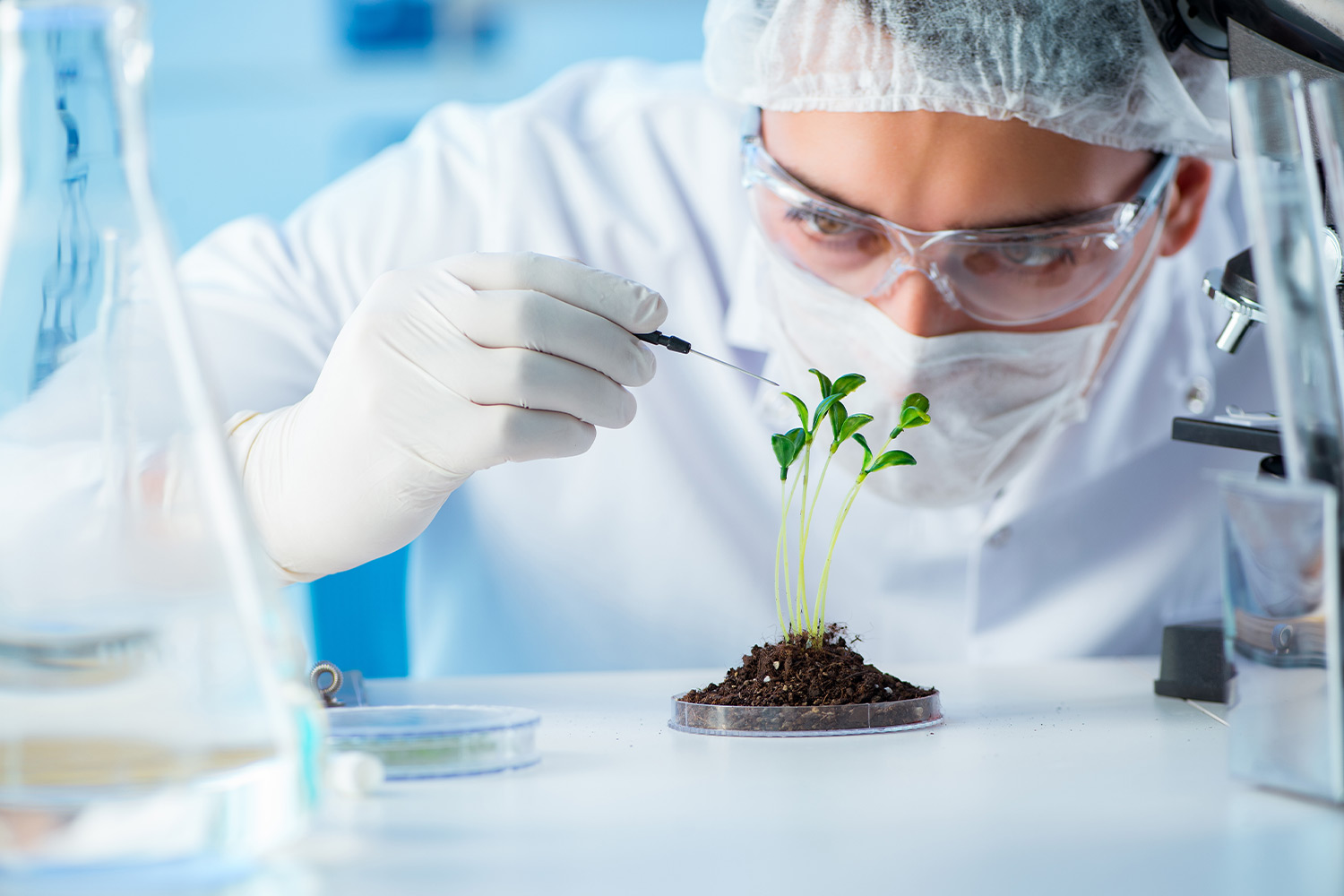Overview of Biotechnology
Biotechnology has paved a new frontier as far as technology is concerned in connecting important sectors and industries. Biotechnology at its core is manipulating materials made from living cells to produce novel products for improving the quality of life. Beyond health, inventions include application areas such as sustainable agricultural practices and conservation of the environment. Below are some key aspects of this developmental field discussed in detail here.
Healthcare: Revolutionizing Medicine and Treatment
Personalized Medicine
The innovative aspect of personalized medicine into healthcare is to personalize treatment against each patient. This came to be a remarkable paradigm shift in health care systems during the early 21st century; this revolution turned its face on the emerging fields of genomics and analytics for better accuracy in delivering medical attention. Such treatments are becoming more efficacious with improved analysis of the genetic makeup of patients.
Advantages of Personalized Medicine:
| Benefit | Description |
|---|---|
| Improved Effectiveness | Treatments target specific conditions with higher precision. |
| Reduced Adverse Reactions | Personalization minimizes the risk of side effects, enhancing patient safety. |
| Cost Efficiency | Over time, tailored treatments reduce the financial burden of trial-and-error methods. |
The finishing touch of Human Genome Project in 2003 marked a major milestone in personalized medicine by initiating the pathways to genetic-based medical treatments. It is predicted that by the year 2025, more than 50% of all healthcare solutions will come from personalized medicine in developed countries. This transformation toward precision healthcare improves treatment efficiency and much greater patient engagement and satisfaction.
Gene Editing Technologies
Like CRISPR-Cas9 has given birth to the latest era of medical innovations. Developed in 2012, CRISPR allowed scientists to perform gene editing with unrivaled precision, speed, and cost-effectiveness. Such advanced technologies will treat genetic disorders that were previously assumed not be treatable.
Applications and Benefits:
| Application | Examples | Benefits |
| Disease Treatment | Sickle cell anemia, certain cancers | Accurate targeting of faulty genes, improving outcomes. |
| Genetic Modification | Agricultural crops | Enhanced resistance to pests and diseases. |
| Research Innovations | Functional genomics studies | Deeper understanding of gene roles and interactions. |
Agriculture and Food: Towards Sustainable Practices
Genetically Modified Organisms (GMOs)
GMOs have now changed the way agriculture is done by addressing production and security challenges in food. Even though the introduction was in commercial form in the mid-90s, they have been designed for better yield and resilience, so that farmers can be in a position to address the needs of the increasing global population, projected to reach 9.8 billion in 2050.
Benefits of GMOs:
| Benefit | Explanation |
| Increased Yields | Enhanced crop resilience allows greater productivity on limited farmland. |
| Reduced Agrochemical Use | Minimizes reliance on pesticides and fertilizers, promoting sustainability. |
| Climate Adaptation | Crops are engineered to withstand extreme weather conditions. |

For example, there was Bt cotton, which was officially launched in the year 2002 in India and accounted for 90% of the cotton farmed in the country by 2020, reduced pesticide use by 50% and increased the yield by 25%.
You May Like: Leveraging Technology for Biodiversity Conservation: Five Examples of Innovation 2024
Vertical Farming
Reimagining agriculture in vertical farming means growing crops in controlled stacked environments. It is a particularly effective application of this method in cities where arable land is limited; it has been largely adopted since the 2010s.
Benefits:
- Space Economization: Maximum output of crops produced per unit area.
- Resource Saving: Uses 90% less water than conventional farming.
- Sustainability: Eliminates the need for harmful pesticides, reduces carbon emissions.
It is expected to be valued at $25 billion by 2030 from a value of $4.4 billion in 2022 when it was first established as part of global trends. This growth has been spurred by increasing adoption of sustainable agriculture globally.
Climate-Smart Agriculture: The Nexus of Innovation and Sustainability
Climate-smart agriculture (CSA) is also important to food security and the environment in an age of increasing global warming. CSA, however, is not only the application of new technologies at a large scale but it is also integrating the advanced technologies with sustainable practices and adapting agricultural systems with climate variability, minimizing greenhouse gas emissions, and increasing resilience among agriculture. This was introduced in 2010 by the Food and Agriculture Organization (FAO) and has an entire transformative model for a global effect.
Key Pillars of Climate-Smart Agriculture
| Pillar | Description |
|---|---|
| Sustainable Intensification | Maximizing yields on existing farmland while preserving natural resources. |
| Climate Resilience | Developing crop varieties and farming practices to withstand extreme weather. |
| Carbon Sequestration | Using methods like agroforestry to capture and store atmospheric carbon. |
Innovations Driving CSA
- Drought Tolerant Crops: Advances in genetic engineering have led to the production of crops such as drought tolerant maize, which helps in minimizing drought-related yield losses. Research indicates that productivity in areas classified as arid with these crops has increased by 20 percent to 30 percent.
- Precision Agriculture: Precision agriculture includes GPS, drones, and IoT devices to optimize resource use. For instance, sensor data moisten a part of the soil so that its moisture can be monitored and water applied only to those depleted areas, reducing waste by 40 percent.
- Integrated Pest Management (IPM): CSA promotes IPM practices whereby natural enemies and biological control are used to reduce chemical pesticides. Farmers who adopt IPM methods report costs savings of up to 60 percent regarding pesticide application.

Global Impact and Adoption
Since inception, and for by far the most part along with, it has been implemented in over 50 nations. The most surging regions include Sub-Saharan Africa and Southeast Asia. By 2030, it is estimated that CSA may reach out to 1 billion smallholder farmers producing a 15% reduction in agricultural greenhouse gas emissions worldwide.
Marine Biotechnology: Unlocking the Potential of the Oceans
Marine Biotechnology refers to a specific sector of biotechnology that includes within its sphere of interest all the resources that oceans have to offer to invent new drugs for health or industrial processes, or innovative conservation practices. It is a fact that oceans cover a huge 71% of the surface area of Earth and are home to an almost infinite reservoir of biodiversity, into which only a small percentage has been tapped.
Applications of Marine Biotechnology
- Diagnosis pharmaceutical: Marine species like sponges, corals, and algae produce some unique bioactive compounds. One example is trabectedin, which is derived from the sea-squirts and approved by the FDA for cancer treatment. More than 20 marine-derived drugs are expected to enter the clinical trials by 2025, targeting diseases such as Alzheimer’s and HIV.
- Advancements in aquaculture: Overhauling aquaculture is marine biotechnology while improving fish breeding, disease resistance, and feed efficiency. Genetically improved farmed tilapia (GIFT) has been shown to grow faster than conventional strains up to 30%-much of this improvement is expected to boost food security in developing countries.
- The bio-remediate: Marine microorganisms work for the cleaning of oil spills and for plastic pollution reduction. Alcanivorax borkumensis, a kind of bacterium discovered in the 1990s, decomposes hydrocarbons and is instrumental in marine oil disaster mitigation.
Economic Potential
The marine biotechnology market on a global scale accounted for $4.8 billion in 2020 and is expected to reach $7.5 billion by the end of the decade due to drug advances and sustainable aquaculture.
Circular Bioeconomy: Transforming Waste into Value
The idea of a circular bioeconomy has rapidly caught on as societies are seeking ways to use biological resources sustainably. Circular bioeconomy differs from the traditional linear economy, which operates on a take-use-dispose model: that is, it is about recycling, reusing materials, and finally forming a closed-loop system.
Critical Areas of Focus
- Waste to Bioenergy: Organic waste, in the form of agricultural and food wastes, can be converted to bioenergy through anaerobic digestion that yields biogas as a renewable energy source and bio-slurry for agricultural use.
- Biorefineries: Biorefineries are used to derive valuable compounds from biomass to manufacture products such as bioplastics, bioethanol, and organic fertilizers. They reported an estimated generation by more than 800 biorefineries in Europe in 2021 as having generated an income to the tune of $75 billion annually.
- Industrial Symbiosis: By-products from one industry are utilized as raw materials in another. For example, waste from a brewery is converted into biogas or animal feeds, which reduces the waste that goes to landfills.
Quantified Benefits
-Economic Development: In 2022, the bioeconomy contributed $2.7 trillion to the world economy and employed over 22 million people.
-Environmental Savings: A shift to a circular bioeconomy may reduce global CO2 emissions by 3.7 gigatons a year by 2050.
Emerging Technologies: Shaping the Future
3D Bioprinting
The salient feature of regenerative medicine is three-dimensional bioprinting, without which the field will remain much undeveloped. Developed initially in the early 2000s, the new technology gained ground qualitatively and quantitatively according to some important benchmarks reached by 2020.
Applications:
| Application | Example |
| Organ Transplants | Custom organs for individual patients. |
| Drug Testing | Testing on 3D-printed tissues reduces reliance on animal models. |
| Research Innovations | Facilitates studies on disease progression and treatment efficacy. |
Synthetic Biology
It is synthetic biology, the melding of biology with engineerings principles, which fuels innovation today in medicine, agriculture, and the environment. From its inception in the early 2000s, synthetic biology has pioneered entirely new things, such as bioengineered bacteria that produce insulin and new microorganisms that synthesize biofuels.
Contributions:
| Area | Example |
| Medical Innovation | Engineered microbes producing affordable vaccines. |
| Sustainable Practices | Bioengineered plants absorbing higher levels of CO2. |
| Industrial Efficiency | Synthetic enzymes accelerating chemical manufacturing processes. |
Conclusion
These aspects of biotechnology are changing the prospects for health care, agriculture, and environmental quality, bringing promising solutions to some of the world’s most pressing problems. From personalized medicine to GMOs, and synthetic biology to 3D bioprinting, innovations in biotechnology propel the advance of socially relevant dimensions. In the second decade of the 21st century, biotechnology will remain in the forefront offensive at international levels to improve life, provide food security, and protect the environment. With appropriate adoption, these technologies will unlock their maximum potential-so that it can be ushered into where science and humanity go hand in hand.






